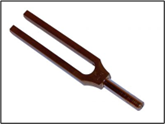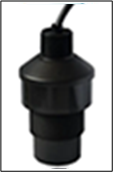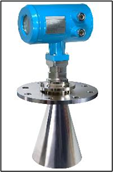What Are The Most Common Types Of Level Sensing Methods And How Do They Differ?
Liquid Level Sensors have been on the market for many years, used in industry sectors such as food and beverage, industrial, medical, printing, agriculture, automotive, and in white goods for leak detection or level measurement. But what are level sensors? In this blog, we look at the main types of liquid level sensors, sometimes referred to as liquid level switches, what they are and how they differ.
What are liquid level sensors?
Liquid level sensors are devices used to measure the level or height of a liquid or fluid in a container. They can be used to measure the level of water in a tank, oil or fuels in a storage container, or liquid in a chemical process vessel. There are several types of liquid level sensors, which can be used to measure the level of a liquid in different ways. These sensors, or level switches, can be used to control and monitor the liquid level in a system and can also be used to trigger alarms or shut-off valves in the event of a high or low liquid level.
Types of liquid level sensing methods
Why do customers choose one technology over another? Sometimes equipment manufacturers can be surprised at the variety and intelligence of level sensing alternatives on the market. There are several types of level sensing methods, some of the most common include:
Optical Level SensorsThese are single point level sensors that use a light source and detector to monitor the level of a liquid. |

|
There are many technical terms used to describe this type of level sensing technology, including optical prism, electro-optic, single-point optical, and optical level switch. For this purpose, we will use the term Optical Level Switch. The switch operates very simply. An LED and phototransistor sit within the sensor housing. When the sensor tip is in air, the infrared light inside the sensor tip is reflected to the detector. When in liquid, the infrared liquid is refracted out of the sensor tip, causing less energy to reach the detector. Being a solid-state device, these compact switches are ideal for a vast range of point level sensing applications, especially when reliability is essential. Optical liquid level switches are suitable for high, low, or intermediate level detection in practically any size of tank. They are also suitable for detecting leaks preventing costly damage. Reflected light, such as in a small reflective tank, mirrored tanks, bubbles, milk, or coating fluids can often cause issues with delayed readings.
Read more on optical level sensors and what they are used for.
Vibrating Level Sensors (Tuning Forks)These are contact sensors and use a vibrating element that changes frequency as the level of liquid changes. |

|
Vibrating sensor technology is perfect for solid and liquid level control, including sticky materials and foam, as well as powders and fine-grained solids. However, the types of applications that can use tuning forks is limited to ‘overfill’ or ‘run-dry’ type applications and they do not provide continuous process measurement. They can be used in conjunction with continuous level detection systems, acting as alarm points for over-filling and leaks.
Ultrasonic Level SensorsThese are non-contact sensors that use ultrasonic waves to measure the distance to the surface of a liquid. |

|
Ultrasonic sensors work by measuring levels by calculating the duration and strength of high frequency sound waves that are reflected off the surface of the liquid and back to the sensor – the time taken is relative to the distance between the sensor and the liquid. The length of time in which the sensor takes to react is affected by various elements in the atmosphere above the media such as turbulence, foam, temperature etc. This is why the mounting position is critical in these devices.
Float SwitchThese contact sensors measure the level of a liquid using a float that rises and falls. |

|
Liquid level float switches are one of the most cost effective but also well proven technologies for water level sensing. It includes a magnet within a float and a magnetic reed switch contained within a secure housing. The float moves with the change in liquid and will cause the reed switch to either open or close depending on if it is in air or liquid. There are usually a range of mounting options, with the most common being horizontal/side mounting and vertical mounting, depending on the design and construction of the tank or container.
Capacitance Level SensorsThese sensors use the change in capacitance between two electrodes to measure the level of a liquid. |

|
Capacitance level sensors work with a range of solids, liquids, and mixed materials. They are also available in contact and non-contact configurations, which means some versions can be attached outside the container or tank. When selecting a device, it is important to know that not every capacitance sensor works with every type of material or tank. In addition, the sensor needs to be calibrated to the specific material to excuse the varying dielectric constants and differences in the tank design. As this type of technology is contact based, the reliability of these sensors can be heavily influenced by fluids sticking to the probe.
Radar Level SensorsA radar level sensor is a type of non-contact sensor that uses radar technology to measure the level of a liquid in a container or vessel. |

|
It works by emitting a microwave signal and measuring the time it takes for the signal to be reflected to the sensor. The time it takes for the signal to return is used to calculate the distance to the surface of the liquid, which is then used to determine the level of the liquid. In principle, radar works in a similar way to ultrasonic, the reliability and repeatability can be affected – but this time by the dielectric constant of the fluid. However, radar can provide very precise level information and compensate for fixed structures within the container. These sensors are among the handful of technologies that work well in foam and sticky substances.
Conductivity Level SensorsThese are contact sensors and use the electrical conductivity of a liquid to measure its level. |

|
Conductive sensors are used for point-level sensing conductive liquids such as water and highly corrosive liquids. A long probe transmits a low voltage, a second shorter probe is cut so the tip is at the switching point. In liquid, the current flows across both probes to activate the switch. One of the benefits to these devices is that they are safe due to their low voltages and currents. They are also easy to use and install but regular maintenance checks must be carried out to ensure there is no build up on the probe otherwise it will not perform properly.
How do level sensing methods differ?
The main difference between these sensors is the way they detect the level of a liquid. Some sensors, such as ultrasonic and radar, are non-contact which means they don't have any physical contact with the liquid being measured. Others, such as optical, float level switches and conductivity level sensors, are contact sensors and have a physical connection with the liquid. Each method has its own advantages and disadvantages, and the most suitable method will depend on the specific application and the characteristics of the material being measured.
The evolution of level sensing technology has meant that processes typically involving expensive pieces of equipment can now be achieved using creative, innovative, and intelligent technologies that are cost effective, reliable, robust, highly accurate and simple to install. Fluids that have historically been extremely challenging to detect, such as soap containing bubbles/foam, milk, and sticky substances such as glue and ink, are now proving possible and easier to detect with the variety of level sensing technologies available.
View PST Liquid Level Sensors and SwitchesRelated Products
Miniature Liquid Level Switches - SST Optomax Digital Range
Cost-Effective Liquid Level Switch for OEM - SST Optomax Basic
High Performance Liquid Level Switch - SST LLHP-Range
Rugged Heavy Duty Liquid Level Switch - SST LLHT Series Glass Tip
Want to see more information like this?
Sign up to one of our Industry newsletters and you’ll receive our most-recent related news and insights all directly to your inbox!
Sign Up